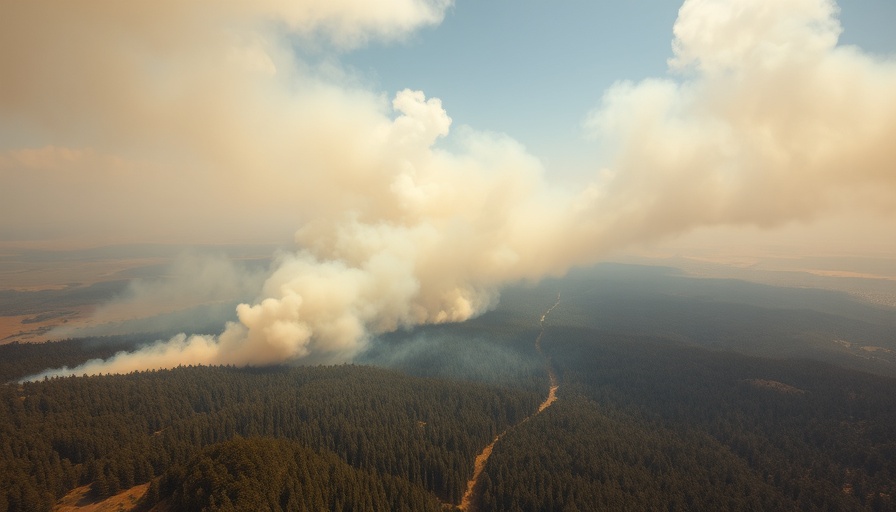
Wildfire Update: Containment Efforts in Stokes County
The wildfire in Stokes County, North Carolina, is making headlines as crews work tirelessly to control its spread. Currently, the fire is approximately 80% contained, covering an estimated 276 acres. The fire began to blaze on the day prior and has required assistance from multiple agencies across six counties, highlighting the collaborative effort to combat this environmental crisis.
In 'Wildfire in Stokes County 80% contained, N.C. Forest Service says', the discussion dives into the challenges faced by firefighting efforts in the area, exploring key insights that sparked deeper analysis on our end.
Understanding the Environmental Context
North Carolina’s landscape is lush and diverse, but dry conditions with low humidity have created a volatile environment for wildfires. This specific wildfire, reported to be located near Rockingham County, has raised alarms not only for its immediate risk but for what it signifies about increasing fire threats across the state. Local weather patterns are crucial; although winds have eased, the soil remains parched, and any spark could reignite fear among residents. The combination of human and natural factors often dictates fire behavior, making vigilance paramount.
Evacuation and Safety Measures
Evacuations around Bennett Road and Going School Road were enacted as a precautionary measure for safety. While there are no confirmed reports of structural damage so far, officials remain on alert as the firefighting efforts continue. It is essential for communities to be prepared and informed about potential risks, and to heed the warnings from local authorities during such incidents.
Collaborative Response Efforts
Community response has been commendable, with volunteers from the North Stokes Volunteer Fire and Rescue Service providing support. This solidarity is a crucial element in managing wildfires, displaying the spirit of cooperation in times of crisis. As local fire departments and state forestry services coordinate, the community is reminded of the importance of being proactive, not just in terms of firefighting but in preventive measures.
Future Implications: A Broader Fire Risk Perspective
As climate change continues to influence weather patterns, experts are projecting an increase in the frequency and intensity of wildfires across the U.S., including North Carolina. The ongoing investigation into the cause of this fire is significant; understanding ignition sources can guide preventive strategies. Residents in the Triad area must remain aware of fire warnings and participate in education initiatives to ensure they are equipped to respond effectively. As we see a shift in environmental conditions, adapting our approach to fire safety will be paramount for safeguarding our communities.
The Role of Community Awareness
For those living in Greensboro, Winston-Salem, and High Point, staying informed about local government news and potential fire outbreaks is essential. Community events often feature discussions on safety protocols and preparedness strategies which can be life-saving. Residents should take advantage of these forums to educate themselves, especially as wildfire season becomes increasingly unpredictable.
Call for Vigilance and Resources
The North Carolina Forestry Service provides valuable resources for those wanting to learn more about wildfire prevention and safety measures. Additionally, residents should keep an eye on Greensboro and Winston-Salem weather alerts, specifically related to dry conditions, which can lead to increased fire danger. Knowledge is power; being aware of the risks and prepared with resources can help mitigate the impact of such disasters in the future.
In light of this wildfire, it is crucial for all residents to heighten their awareness about current events surrounding fire safety, ensuring they remain updated on health and wellness trends in the Triad region. By staying engaged with local news and community events, we can fortify our defenses against future fires and collectively enhance our community resilience.
 Add Row
Add Row  Add
Add 




 Add Row
Add Row  Add
Add 

Write A Comment